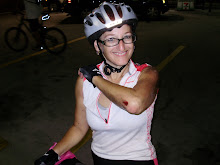
Every kid wants to be a hero. One of the best things about being a hero is all the really cool gadgets a hero gets to use, the technology that is a part of their everyday existence. The E-One Factory makes vehicles for heroes. They engineer and build the complete vehicle - chassis, cab, body, tank and aerial devices. Every machine is built to precisely engineered specifications because there is no margin for error when heroes are at work.
The E-one Factory, right off Exit 350 of I-75 in Ocala, builds fire trucks and rescue vehicles. Ninety minute tours of the 42,000 square foot factory are given at 9 and 11 am on Tues and Thurs. Closed toed shoes are required for safety and comfortable clothing is recommended.
Founded in 1974, E-One turns out about ten new vehicles per week. They build everything from the most basic hook and ladder to the most sophisticated, specially equipped rescue unit, complete with exterior access to medical equipment, all suitable for use under the most adverse conditions. Their product line includes custom and commercial pumpers and tankers, aerial ladders and platforms, rescues vehicles of all sorts and sizes, quick attack units, industrial trucks, and aircraft rescue firefighting vehicles to meet the needs of fire departments, rescue/EMS squads, airports and Homeland Security agencies. They supply government, private and volunteer agencies across the country, including Hillsborough County, Florida.


Imagine working in a mirror, but the reflected view is also upside down. That is how E-One vehicles are made. The interior chassis framework is built, then the electrical and plumbing is installed. As much as possible, the electrical/computer systems are modular based, neat snap together units, very sophisticated in their purpose, very simple in their execution. After the infrastructure is laid in, the exterior shell is attached. The chassis is sanded and painted. Vehicles can be ordered in any color determined by the municipality; there are over 350 shades of red alone. A total of one coat of primer, three coats of paint and two coats of clearcoat are applied.
The stairs and flat surfaces are prefinished with texturing. Swirls are pressed into the flat vertical surfaces to provide a slight amount of traction and reduce reflective glare. The swirls also hide minor scratches, keeping the vehicle looking good longer. The swirl press is the only fully automated machine in the factory. Horizontal surfaces may have multiple holes punched in them, looking like ground that a golf shoe has walked over, to induce skid resistance and help water [from rain or the pumps] flow away from the truck. This trademarked design is called “Gator Grip.” The hole puncher is a die, with the actual holes punched by a person. Interiors may be further finished with a faux concrete or faux granite look, strictly to be eye-pleasing in looks and comfort.
Tanks are made of polyurethane, which is weather, rot and mold resistant and light weight. These may hold water, but more often are used for chemical mixing to make the foam which smothers oil, car or chemical fires. Oil and chemical fires can spread if water is thrown on them.
After the vehicles are fully assembled, they are ‘third party tested.’ Independent inspectors test that the vehicles do what they are supposed to do. They test the pump rate (depending on the vehicle, 1280 to 2000 gallons per minute pumped), the balance of partly and fully extended ladders, the rotation ability of the ladders and cherry pickers, flexibility of the artifical arms. The balance of a hook and ladder is very precise because a fully extended ladder may extend 75 ft away from the truck and has to be counterbalanced by the truck chassis and front to prevent tipping.

At the end of the tour, we were allowed to sit in cabs, press buttons, blow sirens, make lights flash, climb through the various parts of the vehicle and have a blast.
E-One is a delight for children of all ages. Take I-75 North to Exit 350 (Hwy. 200 / College Rd.). Turn left on Hwy 200 and then right onto S.W. 38th Court. Proceed to the stop sign and turn right onto S.W. 38th Avenue. This road runs parallel to I-75, follow it to the light and turn right onto 20th Street. Go under I-75 and turn left on S.W. 37th Avenue. The phone number is (352) 861-3524. They can be reached on the web at http://www.e one.com/index.asp. Cost of the tour is $8 for adults, children ages 6 to 12 and senior citizens (over 55) are $6. Firefighters are admitted free. Children under six are not allowed as a safety precaution.







.jpg)

.jpg)



.jpg)

















